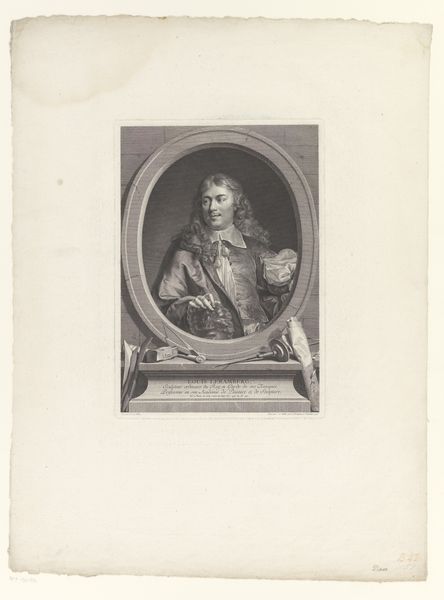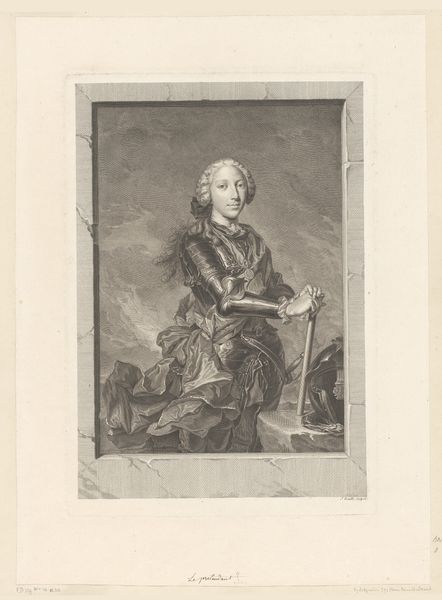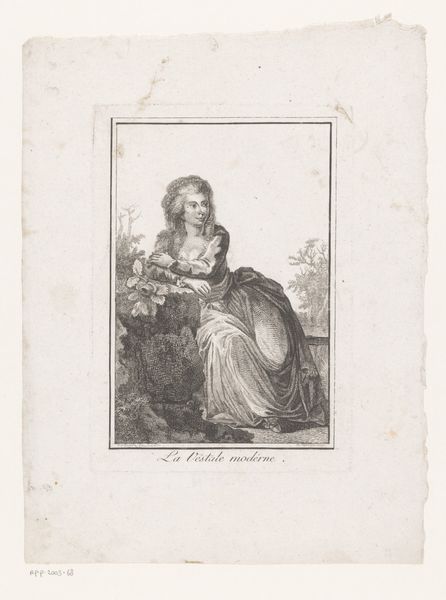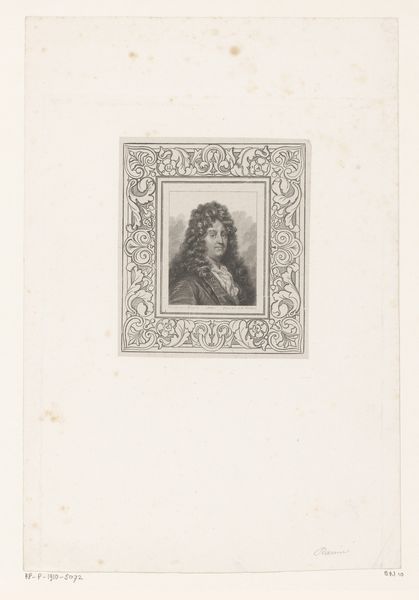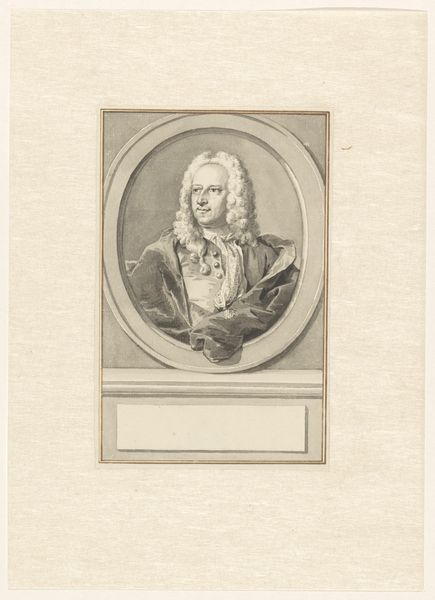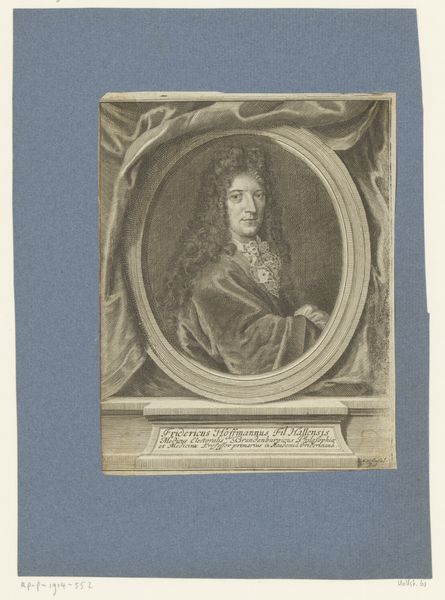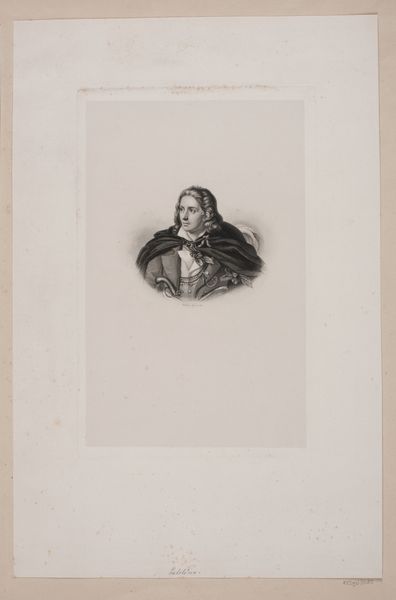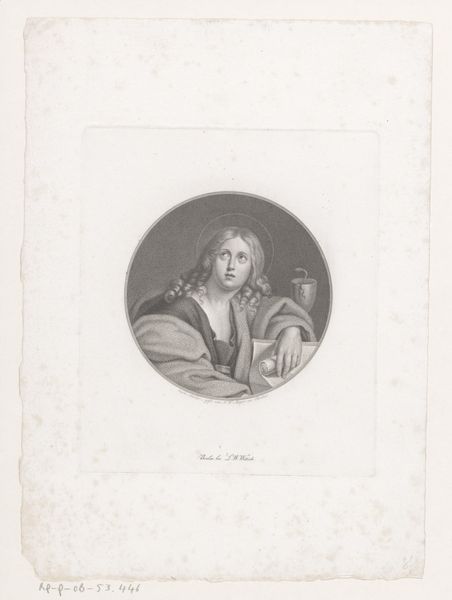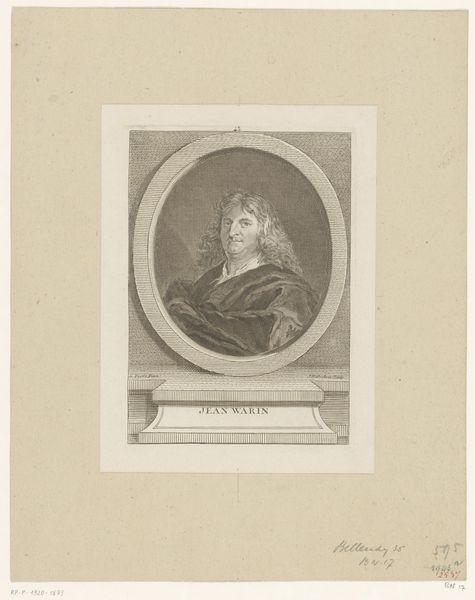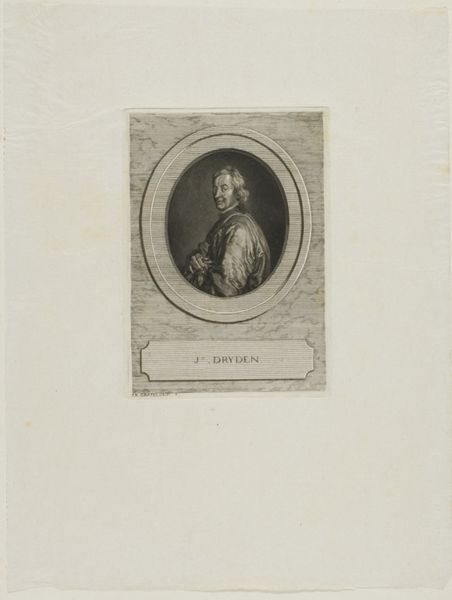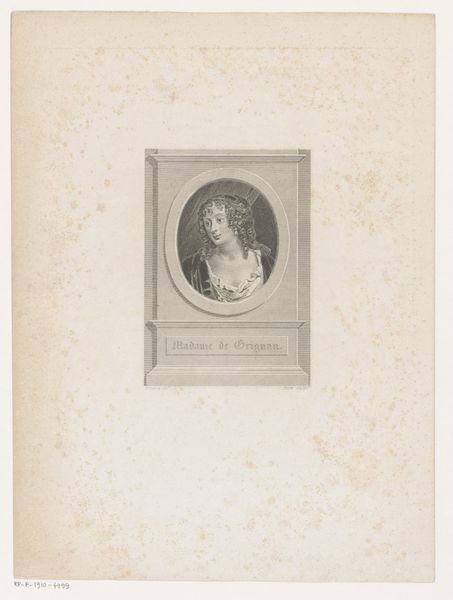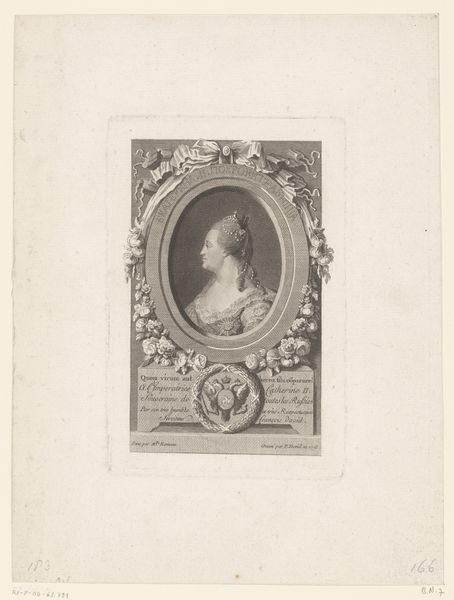
drawing, pencil
#
portrait
#
drawing
#
baroque
#
figuration
#
pencil drawing
#
pencil
#
realism
Dimensions: height 294 mm, width 255 mm
Copyright: Rijks Museum: Open Domain
Editor: Here we have "Portrait of a Young Man Leaning on a Pilaster," a pencil drawing made around 1665 and now hanging in the Rijksmuseum. It has such a delicate quality; it almost seems like you could blow on it and it would float away. What catches your eye when you look at this portrait? Curator: It's funny you say that, I feel the opposite. There's an air of permanence to this rendering—like it’s not just about this young man, whoever he may have been. Doesn't it strike you as less of a spontaneous sketch and more like… the memory of a presence solidified on paper? The artist, Johannes Leupenius, is trying to say something, not just show something. Don't you feel the pull of his gaze? Like you are intruding? Editor: Intruding, definitely. Do you think his positioning suggests anything specific? Is there a cultural code we are missing? Curator: The leaning on a pilaster is interesting. In Baroque portraits it would often suggest stability and classical learning, right? But here, his slouch and gaze seem almost defiant, contrasting with the classicizing element. Maybe it speaks to the tension between tradition and a burgeoning sense of individual identity characteristic of that period. What about the way light is hitting his face and cascading down? Almost angelic, if a bit mischievous! Editor: Yes, now that you point it out, there's definitely a push and pull happening. I hadn’t considered the slouch against the expected backdrop! Curator: Exactly! And isn’t that what makes art history so exciting? To tease out the threads of meaning, even in something as seemingly simple as a portrait, you're entering a complex game of history! I see things differently already just by having this conversation.
Comments
No comments
Be the first to comment and join the conversation on the ultimate creative platform.
